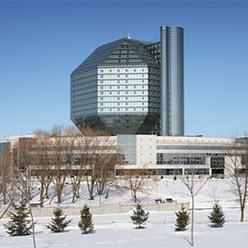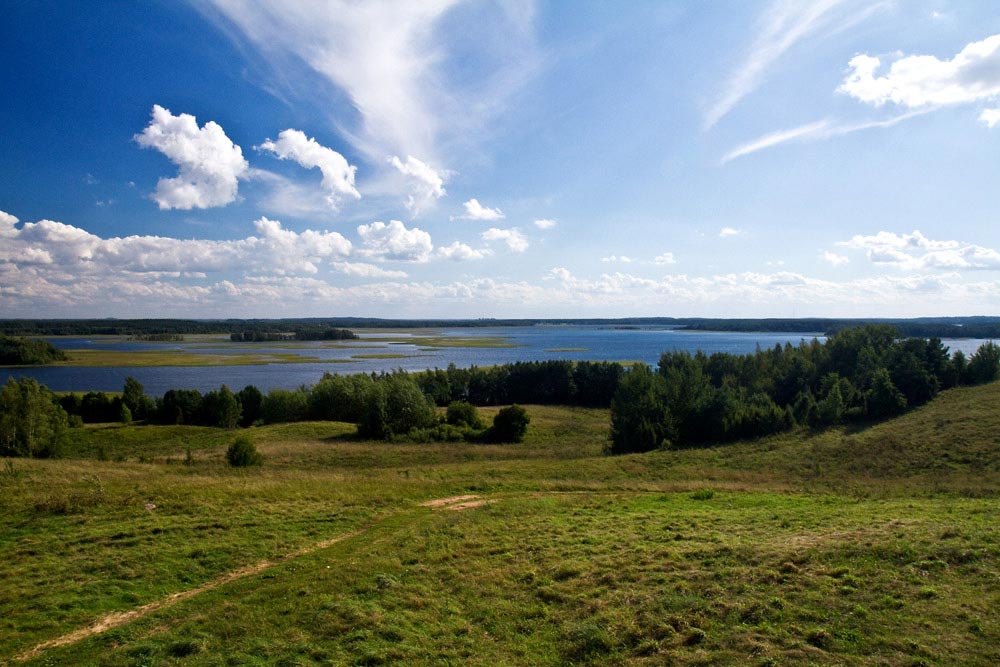
Yakub Kolas as a children’s writer
 Yakub Kolas started his children writer’s career in 1909 when the book the book The Second Reading for Belarusian Children (Другое чытанне для дзяцей беларусаў) was published. Since then, during almost 50 years, the writer had worked fruitfully in the field of children’s literature. Yakub Kolas’ first book for children, published before the revolution, is the most valuable contribution to Belarusian children’s literature, a significant stage in the history of its development.
Yakub Kolas started his children writer’s career in 1909 when the book the book The Second Reading for Belarusian Children (Другое чытанне для дзяцей беларусаў) was published. Since then, during almost 50 years, the writer had worked fruitfully in the field of children’s literature. Yakub Kolas’ first book for children, published before the revolution, is the most valuable contribution to Belarusian children’s literature, a significant stage in the history of its development.
The Second Reading for Belarusian Children was created against a background of an extreme conservatism caused by the defeat of the Russian revolution 1905, when the poet had been dismissed from the post of teacher for participation in the illegal teacher’s congress. In 1909, when the author was imprisoned for his revolutionary activity, the book was printed by the Petersburg publishing house Zaglyane sontsa i u nasha akontsa (Загляне сонца і ў наша ваконца) with significant cuts. Imperial censorship withdrew from the manuscript all works with sharp sociopolitical sounding and directed against oppressors of people: fables Landowner and River (Пан і рэчка), Peasant Woman and Hens (Баба і куры) etc.
Yakub Kolas’ book meets requirements of children’s age. It is notable for a versatile reflection of life, the unity of style, a national character and a riche language, and also sequence and logicality of construction.
This first book had already manifested Yakub Kolas’ bright features of a children’s writer: a deep penetration into the inner world of the child, an intimate attention to the worker, a skill to turn the difficult into the simple and clear, and the simple and clear – to the poetical and interesting.
The basic pedagogical task of the author is to expand children’s vital outlook, to teach them their mother tongue, to cultivate high ethical and aesthetic ideals. All this determines both the contents and the structure of the book.
The author combines texts around several basic themes: nature, the native land, the life and work of the Belarusian peasant, and childhood.
The most developed and substantial theme of the reading book is that of nature, colorful and poetic descriptions of which make a significant part of texts. This first book shows Yakub Kolas’ remarkable skill to describe the native, unique nature of Belarus. The talent of the future author of the trilogy At the Crossroads, poems The New Land and Symon the Musician manifests here.
Almost all landscape sketches of the book are closely connected with Belarusian people’s life that substantially defines their general ideologically-artistic importance. The writer does not hide from children the gloomy sides of life, the injustice of an existing social order. Separate descriptions: The Graveyard (Могілкі), Polessie (Палессе), taken together, create a picture of the pre-revolutionary village.
These descriptions feature a special tonality which reflects the author’s anguish about his people. From concrete sketches and descriptions of separate cases the author successfully throws the bridge to greater human ideas and feelings.
A regular close contact to children, work of a teacher-expert in connection with a great literary caused the author’s skill to sensitively see and deeply understand children’s mentality.
The images of children created by the author manifest a sharp observation, knowledge of children’s soul, a subtle psychologism – the qualities necessary for the children’s writer.
Yakub Kolas skillfully connects educational contents of his articles to entertaining narration: Why Birds are Important to Us (Якую карысць прыносяць нам птушкі), How Fears are Made (Як выдумляюцца страхі), Birds Flying Away (Адлёт птушак). The knowledge, informed to children, is presented here in the form of art sketches.
The writer persistently worked on the language and style of the book, using his knowledge of folklore and the living spoken language of common people, being himself a peasant by birth.
The basic condition of the beauty and the force of Yakub Kolas’ literary language is a creative selection of national language means. The author writes simply, clearly, and therefore his writing is beautiful. The prominent features of the book are its laconism, folklore aphoristic nature of the language, accuracy, juiciness, and beauty of graphic means.
Quite often, in order to achieve a greater interest, to fascinate readers, to inspire them with his ideals and ideas, the author resorts to a passionate narration, an elevated style, a lyrical sincerity that create a special affinity to young readers, transmitting them the author’s enthusiastic perception of the beauty of the world.
The folklore origins of the book The Second Reading for Belarusian Children make it particularly valuable. Together with original works of the poet written on the basis of Belarusian lore, the reading-book includes folklore itself. The last section of the book (Fairytales) consists of 11 works most of which are Belarusian national fairy tales. As a teacher, Yakub Kolas understood that children are especially attracted by a fairy tale, its fantasy closely connected with life, its vivacity and optimism, its comic coloration.
A significant part of comic or satirical fairy tales presented in the pages of the reading-book have a pronounced social sense: Peasant and Landowner (Мужык і пан), Peasant and Gipsy Man (Мужык і цыган), Silly Wolf (Воўк-дурань), Lion and Wolf (Леў і воўк). Some fairy tales glorify optimism and activity: Hard Fate (Цяжкая доля), life as a feat and the revolutionary struggle:A Bird’s Song (Песня птушкі).
The Second Reading for Belarusian Children became a significant step on the way of development of Belarusian children’s literature. The high purposes – to impart love of the native land and nature, to teach the mother tongue, to develop a skill to think independently, to bring up fighters for national happiness – make this book very precious.
The Second Reading for Belarusian Children is the only Yakus Kolas’ book written and designed for children before the Great October Revolution. Along with this book, the writer created a number of stories which, though not addressed to children, became part of children’s reading: The Thought on the Journey (Думкі дарозе), The Revolt (Бунт), Vasil Churyla (Васіль Чурыла), At the Marsh (У балоце), The Living Water (Жывая вада) etc.
Children especially appreciate the stories dedicated to the theme of childhood: In the Old Oaks (У старых дубах),  The Country Bumpkin (Дзеравеншчына), Yurka the Orphan (Сірата Юрка), On the Railroad (На жалезнай дарозе). With his short stories Yakub Kolas entered into the world of children’s ideas and feelings, drew the pictures of an interesting and substantial life of children (In the Old Oaks). At the same time he could not pass by those conditions which gave rise to children’s homelessness, poverty, sufferings and loneliness. The prose writer developed some situations typical of children’s life in the pre-revolutionary time (The Country Bumpkin, Yurka the Orphan). The author often forces the reader to see the world through the eyes of children and depicts life through their perception (On the Railroad).
The Country Bumpkin (Дзеравеншчына), Yurka the Orphan (Сірата Юрка), On the Railroad (На жалезнай дарозе). With his short stories Yakub Kolas entered into the world of children’s ideas and feelings, drew the pictures of an interesting and substantial life of children (In the Old Oaks). At the same time he could not pass by those conditions which gave rise to children’s homelessness, poverty, sufferings and loneliness. The prose writer developed some situations typical of children’s life in the pre-revolutionary time (The Country Bumpkin, Yurka the Orphan). The author often forces the reader to see the world through the eyes of children and depicts life through their perception (On the Railroad).
These works show a high psychological skill of the writer, his knowledge of children’s mentality, feelings and spiritual life.
The short stories, created before the revolution, possess a number of common features that approach them to children’s perception. These stories have a harmonious composition reflecting the author’s precise position, so-called "open" idea that is achieved by expressiveness and vital persuasiveness of images.
The short stories feature rich artistic images of a great vital and psychological fullness. Children especially like the images of their coevals as young readers see themselves in the little heroes and recognize their own ideas and feelings.
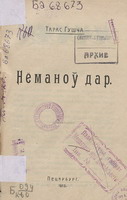 Popularity of Yakub Kolas’ stories among children is explained by his narrative manner in which different style elements are integrally combined: lyricism, dramatic tension and epic effect: The Young Oaklet (Малады дубок), Neman’s Gift (Нёманаў дар).
Popularity of Yakub Kolas’ stories among children is explained by his narrative manner in which different style elements are integrally combined: lyricism, dramatic tension and epic effect: The Young Oaklet (Малады дубок), Neman’s Gift (Нёманаў дар).
The author’s descriptions of nature are another means of aesthetic influence upon children. A role of landscapes in the writer’s stories is various enough. They are a background for an action (Vasil Churyla), quite often nature is a force influencing the person and ruling over his feelings and ideas (The Thought on the Journey). In other cases the light, vital pictures of nature cover a protest against a gloomy reality, against human grief and suffering (On the Railroad). Nature depicted by Kolas is always active; it is a judgment against reality. It is an effective means of education of children’s patriotic feelings. Also, it is one of means of education as such, a source of growth of their knowledge and expansions of their vital outlook.
The pedagogical value of Yakub Kolas’ stories is promoted by the author’s closeness to folklore, a wide use of fantastic images and allegories (The Living Water), proverbs and sayings, national phraseology (In a Marsh). The language of his children’s books is an organic alloy of folklore figurativeness and poetry with the expressiveness and coloring of informal conversation.
Taken as a whole, Yakub Kolas’ works for children, created before the revolution, make the most valuable part of Belarusian children’s literature. At the same time they played a positive role in the development of the author’s literary skill, in the perfection of his creative method.
After the Great October Socialist Revolution, the children’s journal Zorki (Зоркі) (1921–1922) became an important step on the way to new Belarusian literature for children. Yakub Kolas actively participated in the journal edition. In the pages of Zorki there appeared about 20 children’s verses by the author most of which were included into the gold fund of Belarusian children’s literature.
 The poet’s cooperation with the journal Belaruski Pijaner (Беларускі піянер) (the first number issued in 1924) was not less fruitful. A lot of Yakub Kolas’ works were published in 1926, among them there are fairy tales that became classical: Whiskered Crayfish (Рак-вусач) and Old Man and Bear (Дзед і мядзведзь), and numerous verses. The fairy tale Whiskered Crayfish is notable for surprising riches of ideas. The poet not only expands the sphere of the readers’ life experience, but also imparts to them a love of life, brings up an interest to the surrounding reality. Flora and fauna presented in the poem is the world of Belarusian nature, so close to children. The fairy tale develops a sense of humor bringing up steadfastness and courage of children’s souls and tempering them for a vital struggle. It condemns whiners and affirms cheerfulness, diligence and a light belief in future.
The poet’s cooperation with the journal Belaruski Pijaner (Беларускі піянер) (the first number issued in 1924) was not less fruitful. A lot of Yakub Kolas’ works were published in 1926, among them there are fairy tales that became classical: Whiskered Crayfish (Рак-вусач) and Old Man and Bear (Дзед і мядзведзь), and numerous verses. The fairy tale Whiskered Crayfish is notable for surprising riches of ideas. The poet not only expands the sphere of the readers’ life experience, but also imparts to them a love of life, brings up an interest to the surrounding reality. Flora and fauna presented in the poem is the world of Belarusian nature, so close to children. The fairy tale develops a sense of humor bringing up steadfastness and courage of children’s souls and tempering them for a vital struggle. It condemns whiners and affirms cheerfulness, diligence and a light belief in future.
In the 1930s, Yakub Kolas wrote and published a number of books for children. Among them there are collections of short stories, collections of verses and poetic stories, national fairy tales adapted by the writer, literary fairy tales and poems, stories for pioneers. The poem Mikhas’ Adventures (Міхасёвы прыгоды) is devoted to the theme of childhood. The core of the poem is an image of the boy who directly, childly perceives the world. Through the contents of the poem, all the character of poetic images, the pictures of life of nature and people the author brings the young reader to the understanding of the greatness of the person and his creative activity.
Also there was a number of collected poems for children issued as separate editions: In Winter on a River (На рэчцы зімою), Poems for Children (Вершы для дзяцей), Sunrise (Усход сонца), To Children (Детям).
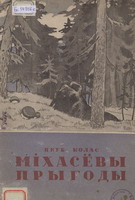



The best samples of the poet’s landscape lyrics are the verses In the Field in Spring (На полі вясною), Stream (Ручэй), Oak (Дуб), Winter (Зіма), Spring (Вясна), In Summer (Летам), Forest (Лес), Night (Ноч). The poet spiritualizes the nature and teaches children to see a never-dying beauty and force in most common pictures. Yakub Kolas’ poetic heritage presents a rich source for children’s reading. In his children’s poetry the poet cultivated almost all known forms of poetic works – songs, poetic fairy tales and stories, lullabies and fables.
A significant part of poems is devoted to the theme of childhood. The poet tells about children, about their impressions and moods, about events from their life. Under the poet’s pen the usual life of children loses its commonness, getting novelty, becoming interesting and fascinating: In Winter on a River (On рэчцы зімою), In Summer (Летам), A Song About Spring (Песня аб вясне), Dronik (Дронік), Grandfather and Grandson (Дзед і ўнук), Slingshot (Рагатка), To School (У школу), To the Study (За навуку), To Pioneers (Піянерам), Pioneer Song (Піянерская песня).
The poems are one of the most popular pages in Yakub Kolas’ writing that children willingly read.
After the October Revolution a number of Yakub Kolas’ short stories for children were published: First Steps (Першыя крокі), Step by Step (Крок за крокам), Selected Works (Выбранныя творы), In the Old Oaks (У старых дубах), The Dawn of Life (Раніца жыцця), Short Stories (Апавяданні).




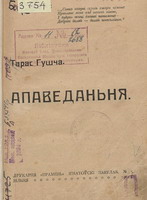
Yakub Kolas’ story At the Frontier Post (Каля заставы) is about a feat accomplished by two Soviet schoolboys-pioneers. Makarka Novak and Lionik Atrashevich, the children who had been brought up by the Soviet school, the Soviet reality. Both of them are hot patriots of the native land. They are ready to serve it sincerely and with enthusiasm. For this reason they help frontier guards to catch an experienced spy. The story glorifies the romanticism of a feat, brings up noble qualities of the citizen-patriot.
What is interesting is that the writer put and convincingly solved a problem of the image of a pioneer in children’s literature, in that way having made his contribution to the question of a positive hero in Soviet literature.
Alongside with Yakub Kolas’ works written specially for children, the treasury of children’s literature includes his books for adult readers. His stories The Quagmire (Дрыгва) and On Life’s Expanses (На прасторах жыцця), poems The New Land (Новая зямля) and Symon the Musician (Сымон-музыка) became the favorite books for children’s reading.

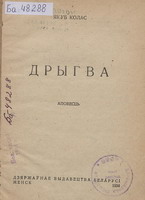
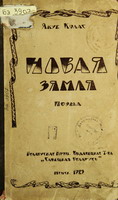

Yakub Kolas ranks as one of most honored writers in the history of Belarusian children’s literature. Moreover, he is its founder who placed the first brick to the base of the future building. The people’s poet outlined the ways of development of the national children’s literature, and it were the ways of nationality and patriotism, humanism and internationalism.
Yakub Kolas left a powerful mark on Belarusian children’s literature. He gave children’s books the ideologically-artistic features which became traditional and still remain in literature. The age range of the writer’s books is also very wide: from fairy tales for preschool children up to books for young adults. Each work of the writer finds its grateful reader among children. And this is an acknowledgement of the fact that the people’s poet heritage is included into the gold fund of classical works.
Source:
Храпунова, Л. Г. Якуб Колас – детский писатель: автореф. дис. ... канд. филол. наук / Л. Г. Храпунова; Бел. гос. ун-т им. В. И. Ленина – Могилев, 1965. – 20 с.


